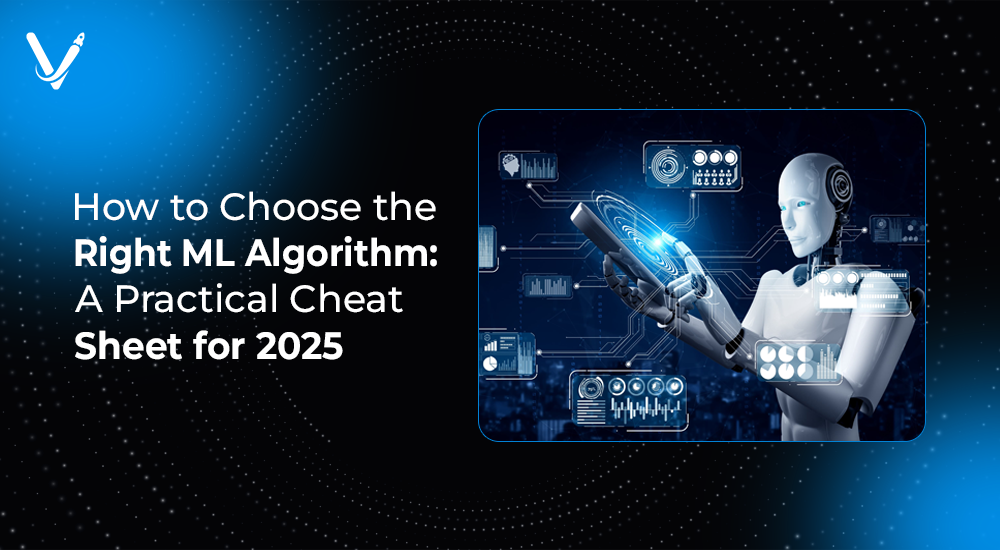How to Choose the Right ML Algorithm: A Practical Cheat Sheet for 2025


- May 16, 2025



In 2025, the importance of machine learning algorithms continues to grow as businesses seek to leverage data for actionable insights. From predictive analytics to recommendation systems, machine learning algorithms power critical business functions across industries. However, choosing the right algorithm can be daunting due to the wide array of options available. Selecting the wrong algorithm can result in inaccurate predictions, increased computational costs, and poor performance.
This comprehensive cheat sheet simplifies the decision-making process, providing a step-by-step guide to selecting the optimal machine learning algorithm for different scenarios. Whether you're a data scientist, developer, or business strategist, this practical guide will help you navigate the landscape of machine learning algorithms effectively.
Machine learning algorithms are the backbone of AI-driven systems. They enable machines to learn patterns from data and make predictions without explicit programming. The right algorithm can turn raw data into valuable insights, enabling businesses to optimize operations, improve customer experiences, and drive revenue growth.
Before diving into specific algorithms, it is crucial to understand the basic types of machine learning algorithms and their unique characteristics. This foundational knowledge will serve as a reference point throughout the selection process.
Machine learning algorithms can be broadly classified into four categories: supervised learning, unsupervised learning, semi-supervised learning, and reinforcement learning. Each category addresses specific data types and problem structures, making algorithm selection more systematic.
Supervised learning involves training a model on labeled data, allowing it to learn from input-output pairs. The goal is to predict a specific output based on input data. Supervised learning algorithms can be divided into two main types: regression and classification.
Examples:
Real-World Use Cases:
Classification Algorithms: Classification algorithms categorize input data into predefined classes or labels.
Examples:
Real-World Use Cases:
Unsupervised learning deals with unlabeled data and focuses on identifying hidden patterns, structures, or relationships. The primary types of unsupervised learning algorithms are clustering and association.
Clustering Algorithms: Clustering algorithms group data points based on similarity, making them useful for market segmentation, anomaly detection, and data exploration.
Examples:
Real-World Use Cases:
Association Algorithms: Association algorithms discover relationships between variables, making them ideal for market basket analysis and recommendation systems.
Examples:
Real-World Use Cases:
Semi-supervised learning leverages both labeled and unlabeled data, making it effective when labeling is costly or time-consuming. These algorithms are especially useful in applications where only a small portion of the data is labeled.
Examples:
Real-World Use Cases:
Reinforcement learning involves training agents to take actions in an environment to maximize cumulative rewards. This approach is particularly useful in decision-making systems and autonomous systems.
Examples:
Real-World Use Cases:
Choosing the right algorithm involves evaluating the data, problem type, and desired outcome. Key factors to consider include:
Selecting the right machine learning algorithm requires a thorough understanding of data structure, problem type, and computational resources. By using this practical cheat sheet, you can make informed decisions that align with your project goals, ensuring optimal model performance. Vasundhara Infotech offers end-to-end Machine Learning Development services, from algorithm selection to model deployment. Contact us to leverage expert insights and accelerate your AI initiatives.
Copyright © 2025 Vasundhara Infotech. All Rights Reserved.